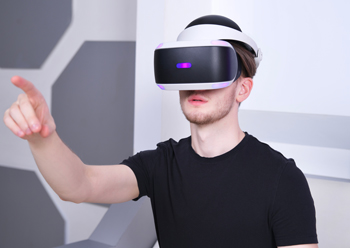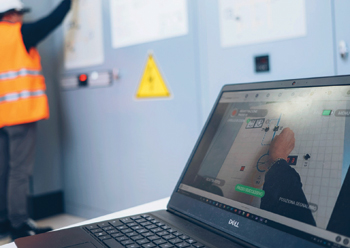
 Binocular, mixed reality devices dominate the AR market
Binocular, mixed reality devices dominate the AR market
With investment and interest growing exponentially, the augmented reality (AR) market is set to grow at an equally significant rate over the next five years.
According to new research by ABI Research, nearly 40 million Augmented Reality smart glasses will ship in 2027, with the total augmented and mixed reality market surpassing $220 billion in the same year.
Much of this growth will stem from the consumer AR market on the back of new hardware and content, but the enterprise AR space will also continue to show strong growth, the research agency notes.
 |
|
Eric Abbruzzese |
“It is impossible to miss news surrounding the augmented reality market today, both from the fascinating metaverse side and the more grounded and short-term augmented reality opportunities and investment,” says Eric Abbruzzese, Research Director at ABI Research.
Massive, far-reaching rebrands like with Meta alongside more traditional new devices, software, and services from big names like Google and Apple lend credence to the momentum.
Media and entertainment and sports and fitness lead in adoption and growth over the next five years, with 118 per cent and 101 per cent installed base CAGRs, respectively. Tourism, healthcare, retail, and education are also growing significantly, thanks to cross-market opportunities and an increasing addressable user base of consumers. These findings are from ABI Research’s Augmented and Mixed Reality Market Data: Devices, Use Cases, Verticals, and Value Chain market data report.
Binocular, mixed reality devices dominate the forecast in terms of growth, powered by declining prices, increasing capability, and a greater selection of mixed reality content in all verticals. However, what devices exactly end up pushing the market is unclear, with lessening incumbent advantages meeting increasing competition.
 |
|
|
Even with binocular focus, monocular devices are not to be discounted. They are still seeing steady growth and usage mostly in enterprise domains where environmental awareness precedes immersive content—RealWear, Vuzix, and similar devices will continue to see success here.
Much of the interest, and thus growth, will be seen in the consumer space. However, overlap with cross-market content and services and shared interest for consumer-targeted smart glasses devices in enterprise applications will drive the market from all directions.
“Metaverse does play a role over the next five years, especially as a catalyst for interest and investment, but day to day usage will still be found in more traditional ecosystems powering augmented reality,” says Abbruzzese.
VR TO REACH 90M SHIPMENTS
Likewise, after years of slow but steady growth in limited use cases, Virtual Reality (VR) is facing a market explosion over the next five years. Spurred by renewed immersive opportunities, VR, is expected to reach 90 million total device shipments in 2027, according to ABI Research.
Consumer interest in VR games and media continues to grow after Covid accelerated activity. At the same time, the need for worker enablement and immersive content in enterprise remains strong.
According to ABI Research, over 90 million Head Mounted Display (HMD) shipments in 2027 will power total VR market revenues to reach over $95 billion in the same year across hardware, software, and services. “The virtual reality market is no stranger to false starts, with identifiable efforts in VR dating back to the 1980s and 1990s. While the technology never found purchase, the increased capability of VR hardware combined with, perhaps most importantly, demand for immersive content in numerous markets, presents a significant opportunity,” says Abbruzzese.
“While the intense focus on metaverse is partly responsible for this increase, shorter term opportunities are driving the expected growth,” he adds.
Among devices, standalone HMDs make up most shipments through the forecast, with 79 million expected shipments in 2027, growing at a 40 per cent CAGR, reveals the findings from ABI Research’s report.






